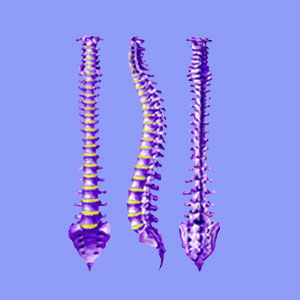
Osteopathy for sciatica is one of the 2 main traditional approaches to care in the modern medical system. Osteopaths, designated by the professional title D.O., are equivalent to M.D.s in that they are legally recognized physicians. Many years ago, osteopaths and medical doctors had 2 very different approaches to care, but as the years have progressed, the differences between these 2 types of physicians have all but disappeared. When you consult with a modern osteopath, you really never know what to expect. Some may embrace the traditional distinction which makes them favor natural and holistic methods of care, while others have simply jumped on the pharmaceutical and surgical bandwagons 100%.
This essay examines modern osteopathy in the sciatica treatment sector.
Osteopathy for Sciatica Explained
Osteopathy teaches its practitioners that the job of a doctor is to allow the body to heal itself by providing support and general healthcare. Less care is thought to be better and non-organic care practices are not ideal. Additionally, the human being is clearly portrayed as a creature of mind, body and spirit, with all these components of the self contributing to general health and disease. This is a huge step over the Cartesian approach of the M.D. profession.
Osteopaths hold dear all things holistic, since the body can and will heal if given the chance to do so. Symptomatic treatment is actively discouraged and drugs or surgery are never the favored treatments of choice. That being said, many D.O.s have long since abandoned these roots and simply go where the money is in terms of treatments offered.
Drug treatment and surgical intervention are extremely common services provided by many osteopaths who may have earned the D.O. degree, but have certainly not taken the lessons of the education to heart. Instead, they would rather embrace the teachings of often unenlightened medical practices, but take some large checks to the bank. Personally, I think this change of practice ideology is mostly financially-motivated.
Therapeutic Osteopathy
Now if the modern osteopathic medicine sector actually followed its tenets, the world would be a much better place, particularly for back pain patients. Of course, there are some D.O.s who do adhere to the intrinsic philosophies of their educational teachings. However, many have abandoned most of the actual positive differences expressed in osteopathy in favor of the far more profitable approaches championed by medical doctors worldwide. This entails mainly not bothering to work so hard to diagnose anything. Just prescribe lots of drugs and if that fails, then refer the patient to a specialist who will probably cut something out or off.
Is this medicine? No, that’s criminal torture in my book. Is it effective? Occasionally. However, curative statistics for chronic sciatica and back pain are poor, often frighteningly so. This proves that maybe modern osteopathy needs to reinvent itself once again and be something different and alternative if you will.
Osteopathy for Sciatica Editorial Opinion
A true osteopath will see the symptoms of sciatica as a disturbance in the health of a patient. They will take the time to diagnose the sciatica based on mind, body and emotional contributors. They will design a treatment plan which supports the body in its natural ability to heal and will not do anything to damage the body, such as recommending poisonous drugs or traumatic surgery, unless these things are absolutely necessary evils.
Following this regimen, a true osteopath might just be able to provide a real cure for sciatica. Unfortunately, it seems there is little of this type of detailed care actually practiced in modern osteopathic medicine. Usually, the plan will go more like this:
“Ok, Mr. Patient, what is the problem? Oh, sciatica, huh? Too bad. Here, take some of these pills and go see this orthopedic surgeon. Call me for a follow up in 2 months whether or not you have surgery. That will be $400.”
You tell me, is this osteopathy?
Is this even ethical?
Is this even human?





